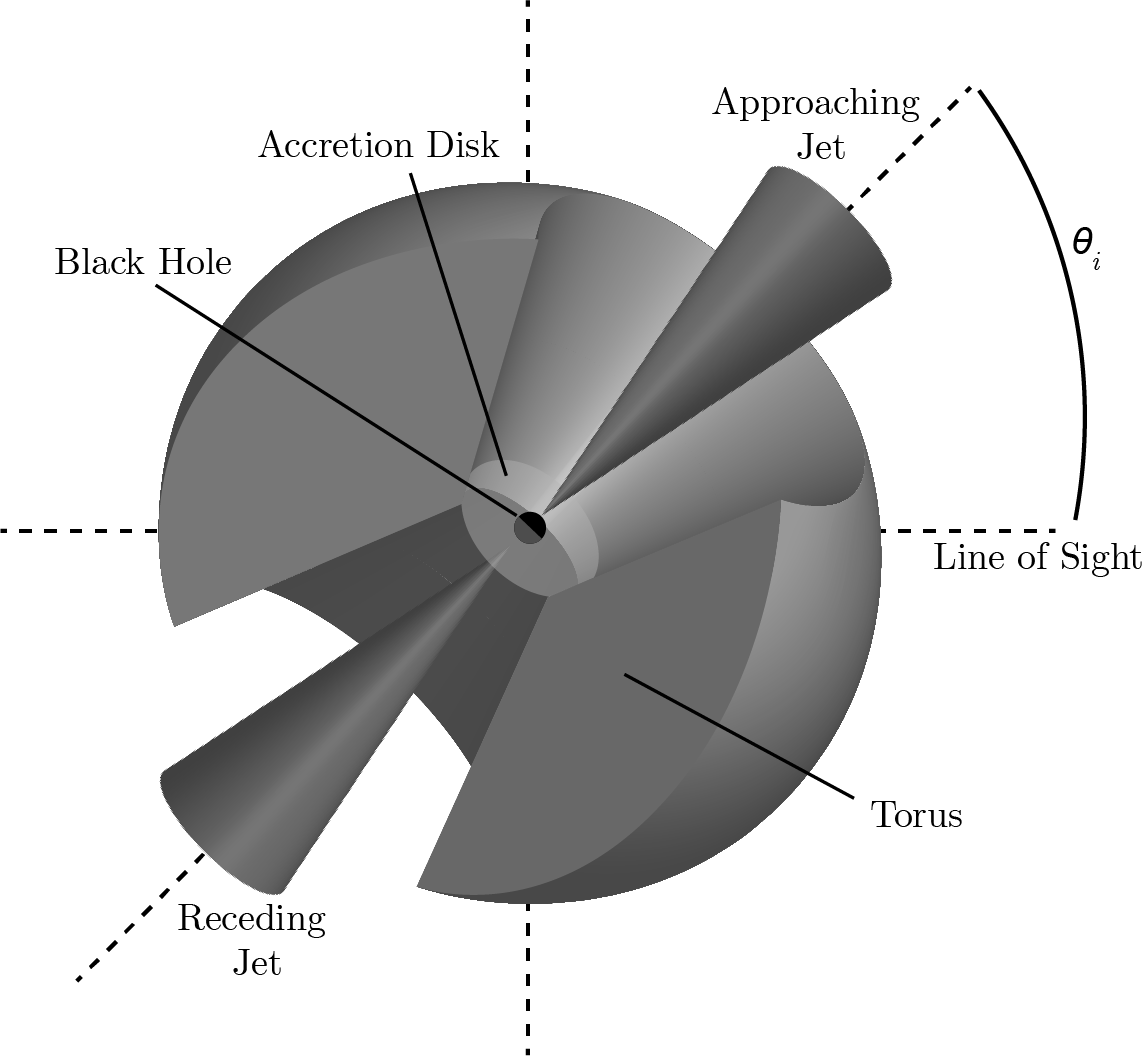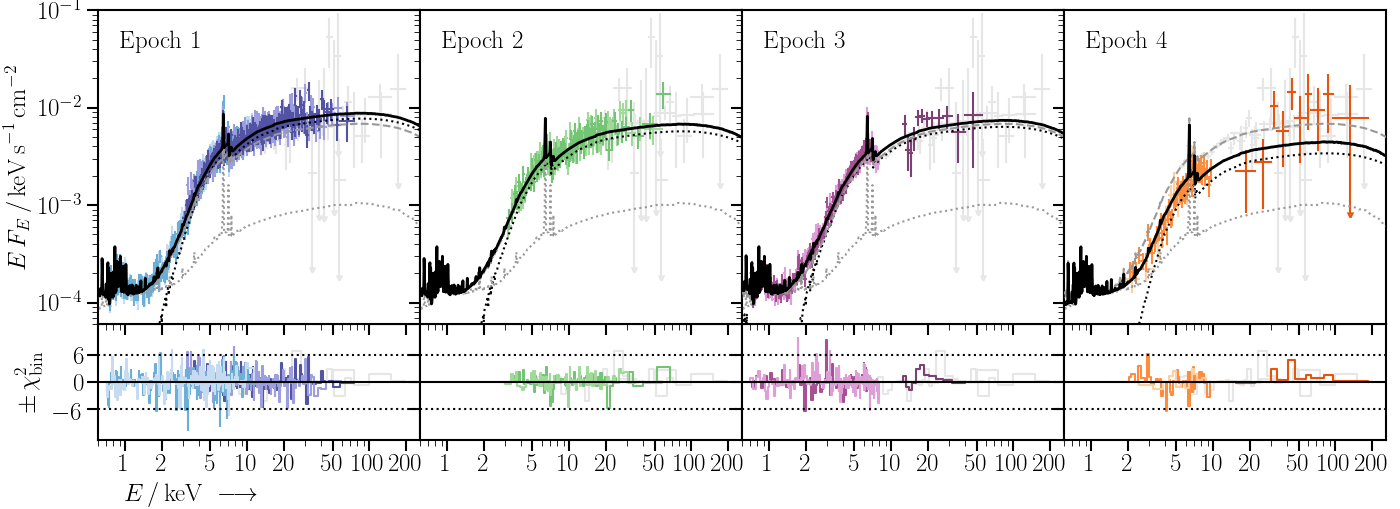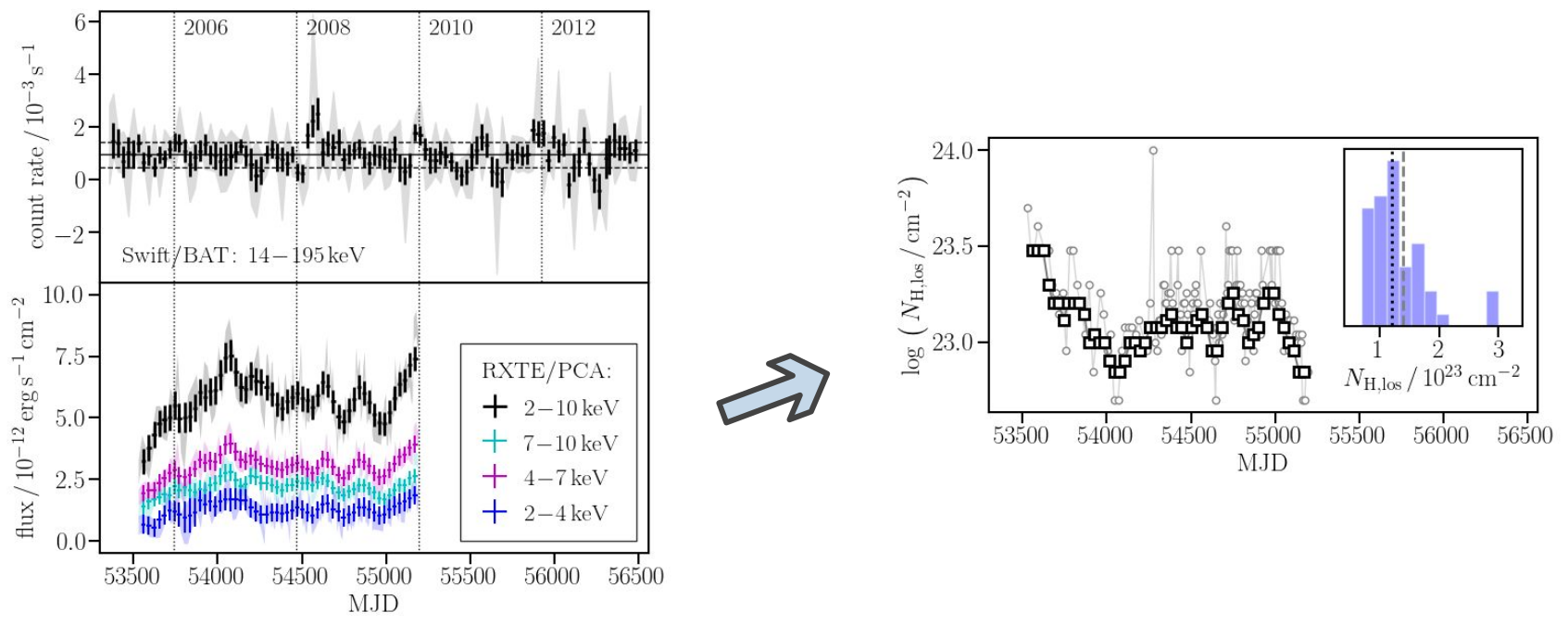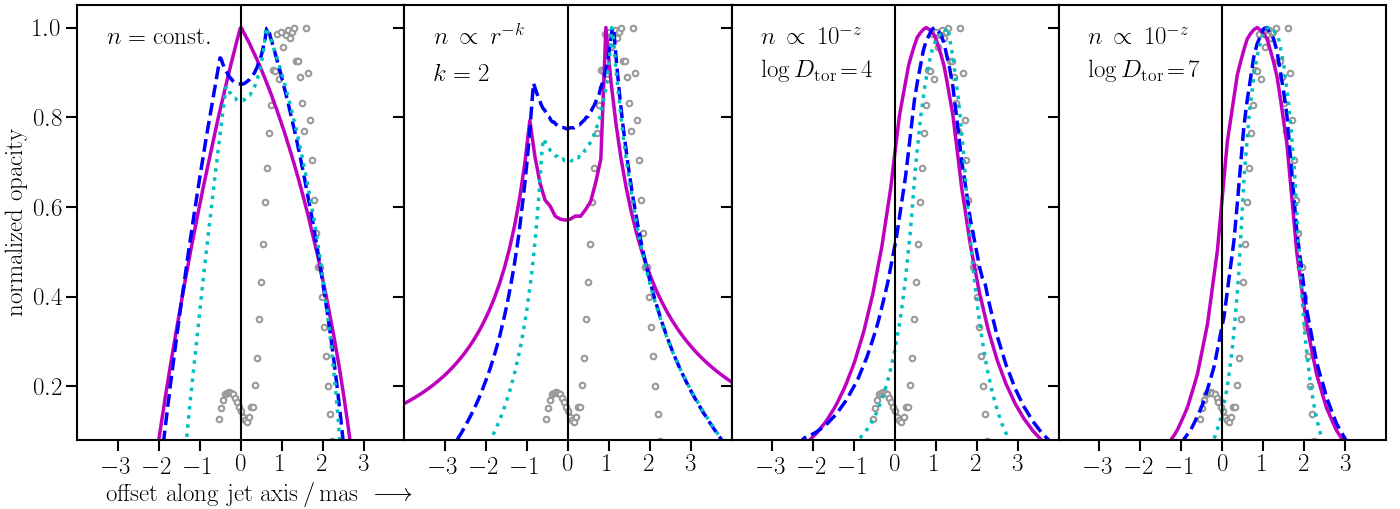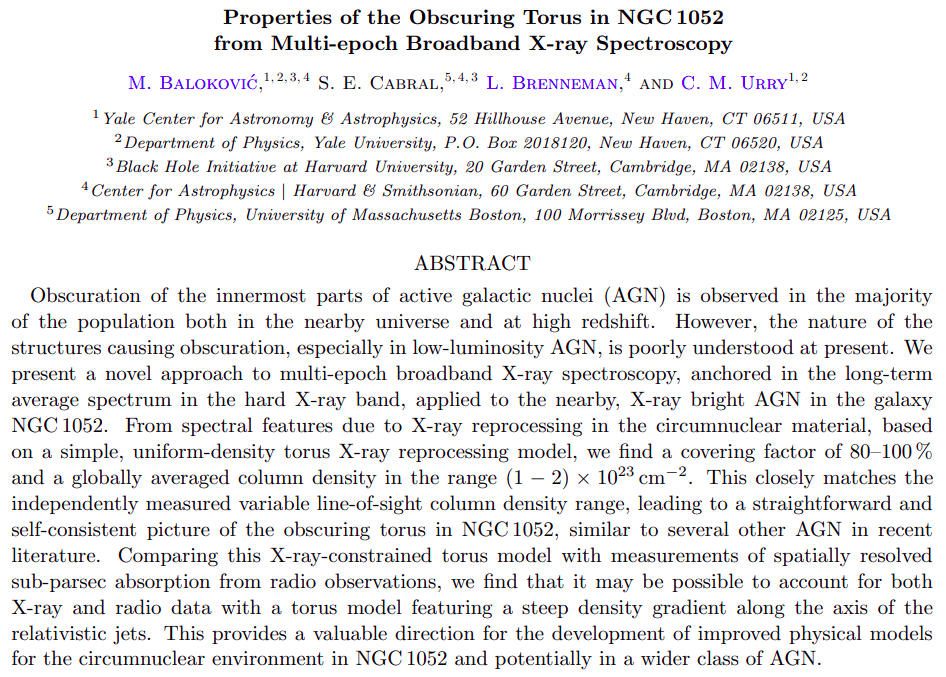Broader Context of Torus Covering Factor Studies
- In the orientation-based Unified Model paradigm, the ratio of obscured to unobscured AGN depends on the average covering factor of the obscuring torus (Ctor).
- Observationally, a number of studies have found that the covering factor of the torus is a function of luminosity or the Eddington fraction. It appears to be highest in the typical Seyfert regime and lower toward both higher and lower luminosities (e.g., Ricci et al. 2017, Gonzalez-Martin et al. 2017).
- On the theoretical side, this may be explained by 1) stronger radiative feedback clearing the environment at high luminosities, and 2) lack of radiative support for a geometrically thick torus at the low-luminosity end (e.g., Elitzur & Shlosman 2006, Honig & Beckert 2007).
- Constraining the torus covering factor based on X-ray spectroscopy is novel and typically requires high-quality broadband X-ray data. Current results on the dependence of the covering factor on luminosity are impacted by small number statistics and limited data quality for low-luminosity AGN (see figure below from Balokovic 2017; also Marchesi et al. 2019).
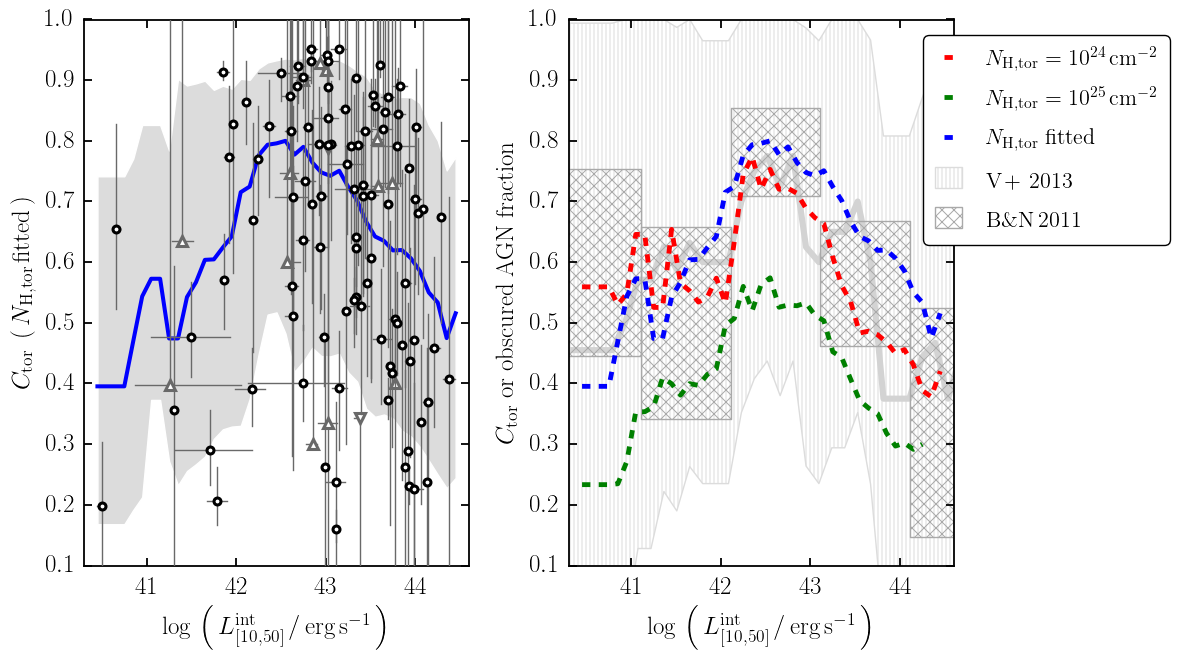
Left: Torus covering factor based on X-ray spectroscopy for a large sample of nearby obscured AGN selected using Swift/BAT and observed with NuSTAR, from Balokovic (2017). Black circles mark best fits and grey triangles mark limits for individual AGN. The blue line and the grey shaded area represent the running median and its 68% confidence interval. Right: Colored lines represent different choices for the assumed torus average column density, all three revealing the same non-monotonic dependence of the torus covering factor on the intrinsic X-ray luminosity. Grey lines, shaded area and hatched boxes show the obscured AGN fraction (proxy of the covering factor) from Vasudevan et al. (2013) and Brightman & Nandra (2011).
Additional Leverage on the Torus Covering Factor in NGC 1052
- To improve the existing constraints on the low-luminosity end, we conducted a multi-epoch broadband X-ray spectroscopy of the nearby AGN NGC 1052.
- We can enhance the spectroscopic results with the variability of the line-of-sight obscuring column and with the milliarcsecond (mas) scale radio opacity measurements from very long baseline interferometry (VLBI).
- Panels on the right follow analysis steps from the paper available on arXiv: 2105.01682 (accepted for publication in ApJ).

